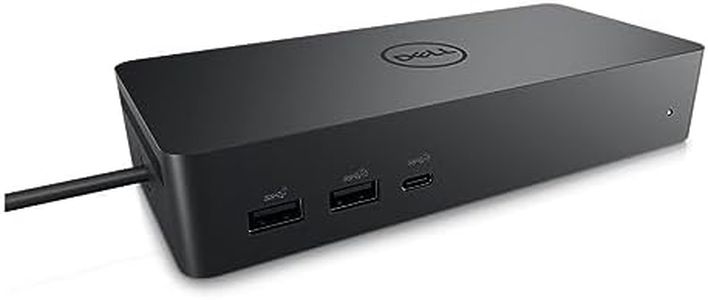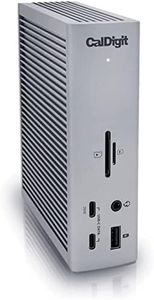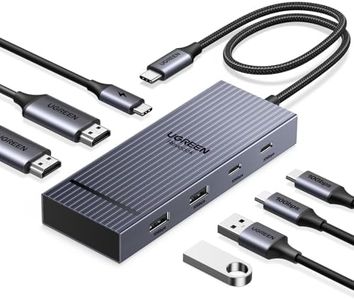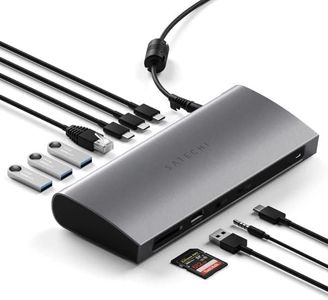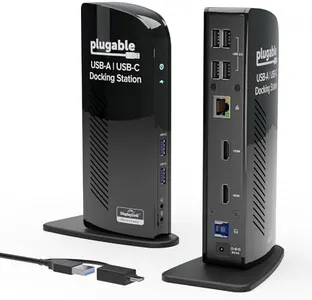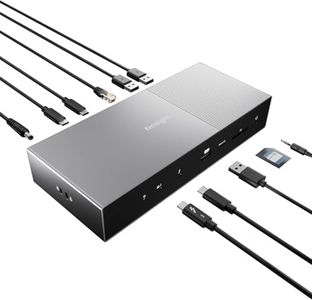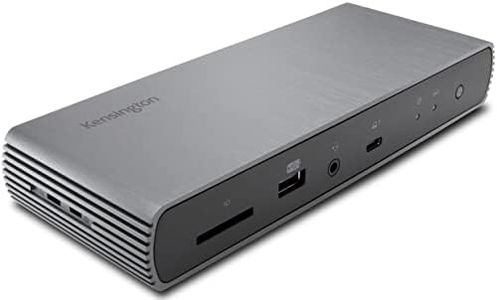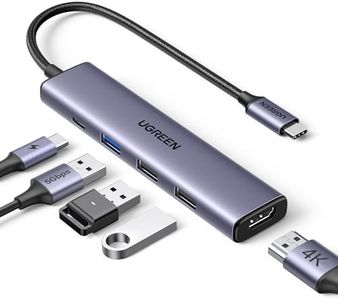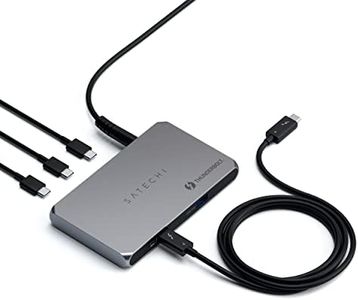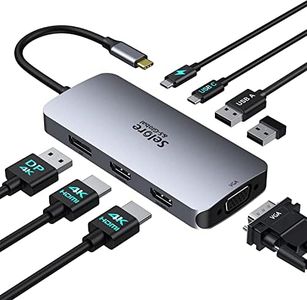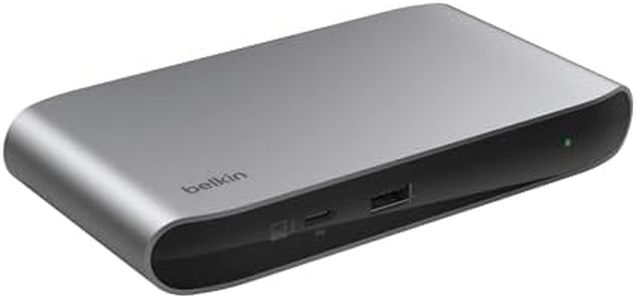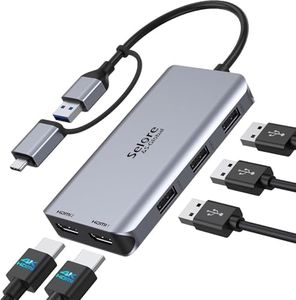We Use CookiesWe use cookies to enhance the security, performance,
functionality and for analytical and promotional activities. By continuing to browse this site you
are agreeing to our privacy policy
10 Best Macbook Air Docking Stations
From leading brands and best sellers available on the web.Buying Guide for the Best Macbook Air Docking Stations
Choosing the right docking station for your MacBook Air can greatly improve your work setup, providing you with more ports, easier charging, and better organization. Since MacBook Airs tend to have limited connectivity, a well-chosen dock can expand your laptop's capabilities and make it much more versatile. The key to finding the best one for you is considering how and where you’ll be using your laptop most, and matching the dock’s specifications to your own needs.Port SelectionPort selection refers to the types and numbers of connections available on a docking station, such as USB-C, USB-A, HDMI, DisplayPort, Ethernet, SD card slots, and audio jacks. This spec is important because it dictates what devices and accessories you can connect to your MacBook Air at the same time. If you mainly use basic peripherals like a keyboard and mouse, a dock with a few USB ports may suffice. If you need to connect external monitors, a wired network, or transfer files from SD cards, look for a docking station that includes those ports. Assess what devices you use daily and pick a dock that supports all your key accessories without needing extra adapters.
Power Delivery (PD)Power Delivery is the amount of charging power (measured in watts) that the docking station can provide to your MacBook Air while connected. This is important because a dock with sufficient PD can keep your laptop charged as you work, streamlining your desk by letting you plug everything into the dock. Power Delivery values usually range from around 30W to more than 90W. For a MacBook Air, 30W to 60W of Power Delivery is typically enough, but higher wattage won’t hurt and can be more future-proof. Make sure the docking station provides at least as much power as your laptop’s charger to maintain battery health and performance.
Video Output SupportVideo output support indicates what kinds of external displays you can connect, and at what resolutions and refresh rates. This is important if you want to use extra monitors with your MacBook Air for multitasking or creative work. Some docks support one display, while others allow two or even more, often with different connection types like HDMI or DisplayPort. Consider how many monitors you plan to use, and their resolution (such as Full HD, 4K, etc.). If you just need one external screen for web browsing or office work, basic video support will do—but for high-quality content creation or multi-monitor productivity, choose a dock with strong support for your desired display setup.
Form Factor and Desk SetupForm factor refers to the dock’s physical size and shape, whether it sits on the desk, stands upright, or is travel-friendly and compact. This matters because your workspace, mobility needs, and aesthetic preferences play a big role in comfort and usability. If your desk is small or you often move between workspaces, look for a slim, portable dock. If you want a permanent workstation, larger desktop-style docks with more ports and power are suitable. Think about how often you’ll move the dock and plan accordingly—travel-friendly models sacrifice some ports for size, while stationary docks maximize connectivity.
Compatibility with MacBook AirCompatibility means how well the docking station works with your specific MacBook Air model, especially considering MacBooks with different processors (like Intel or Apple Silicon), and the type of USB-C or Thunderbolt ports they have. Not every dock supports every feature (such as dual displays) on every MacBook Air, so it’s important to check if the dock is fully compatible with your laptop’s ports and capabilities. Make sure that the docking station lists support for MacBook Air, especially for more advanced setups requiring Thunderbolt or special display configurations.
Build Quality and ReliabilityBuild quality covers the materials, durability, and overall reliability of the docking station. This is important because a well-built dock will withstand daily use and ensure stable connections. While it can be hard to judge from the outside, look for docks with a solid construction, good heat dissipation, and a solid warranty. If you plan on keeping the dock in one place, durability isn’t as critical, but for travel and frequent use, metal and higher-quality materials are worth considering to avoid wear and tear.
